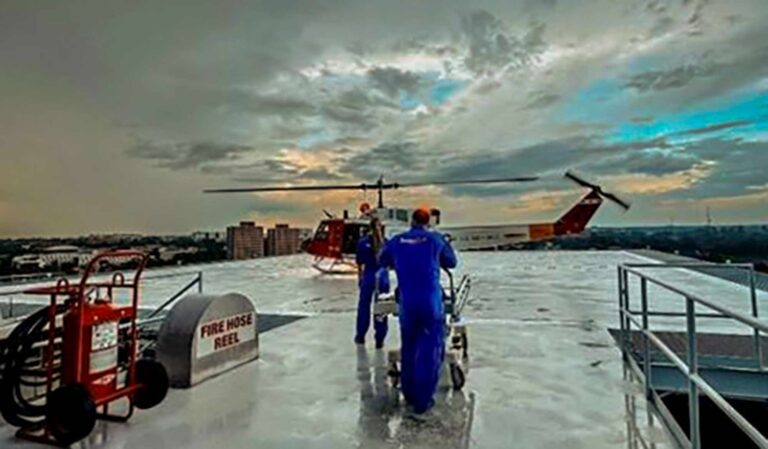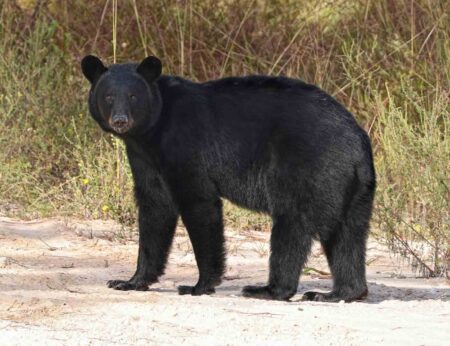EGLIN AIR FORCE BASE, Fla. — A desperate race to save a two-month-old child’s arm brought two Eglin Air Force Base (EAFB) units together for a life flight mission from Miramar Beach to Gainesville in July, EAFB has announced.
The 96th Medical Group and the 413th Flight Test Squadron teamed up July 23 to transport the baby from Sacred Heart on the Emerald Coast to the University of Florida Shands Hospital. The infant, who had an arterial blood clot that threatened her limb, needed immediate care after severe thunderstorms and crew limitations left no civilian air transport available, according to the Air Force. The Air Force Rescue Coordination Center then turned to Eglin for help.
Jared Schultz, a 96th MDG paramedic, joined a UH-1 Huey crew to Pensacola to pick up Renee Hamilton, a Sacred Heart registered nurse, the infant, and her mother.
Ms Hamilton said she quickly learned the pace of military life flights.
“‘The blades will not stop’ was the first instruction I received at the beginning of the mission,” Hamilton said.
“It was fascinating to think we only had time to get in and out of the aircraft while the blades moved. That showed the efficiency and effectiveness of the crew.”
The UH-1 was configured as a passenger aircraft, but its space proved useful for medical care. Ms Hamilton and Mr Schultz monitored the child’s medication, vital signs, and circulation in her arm throughout the two-and-a-half-hour flight.
“If her arm was in the wrong position, she would lose blood flow in that arm, and it would immediately turn purple,” Schultz said.
“Her arm needed continuous repositioning until I ultimately held it in one position for over half the flight.”
The crew fought low ceilings, heavy rain, and the constant threat of thunderstorms. Maj. Richard Burges, a 413th FLTS experimental test pilot, said the team relied on combat flight experience to handle the conditions.
“The ceiling and visibility dropped as low as 1,000 feet and two miles at times, due to heavy rain and clouds,” Maj. Burges said.
“However, we have significant experience in low visibility and low altitude flight in combat, which allow us to operate in challenging environments like we had that day.”
Maj. David Bennett, also a 413th FLTS test pilot, said the situation was tense but the child’s calm demeanor helped steady everyone on board.
“The baby was so calm and quiet throughout the flight though,” Maj. Bennett said. “It helped the atmosphere stay positive.”
When the helicopter reached Gainesville, the infant was rushed directly into surgery. Doctors were able to save her arm, according to Ms Hamilton and her colleagues.
“The timeliness of transporting our pediatric patient to a facility with a higher level of care was invaluable,” said Katie Summers, the patient’s primary nurse that day.
“The fact that we can rely on our military service members to safely and efficiently fly our patients in their most critical moments is something we treasure.”
The return trip was no easier.
Storms worsened as the day went on, and the crew eventually landed in Alabama after reaching duty hour limits. Still, Maj. Burges said the outcome made the effort worthwhile.
“As test pilots, we’re typically a little removed from the operational impact of our work, so it’s always wonderful to be able to directly contribute to something that has immediate effect on a person’s life,” Maj. Burges said.
“Helping people this way is, without question, the best part of the job and why I became a helicopter pilot.”
Original story by Samuel King Jr.








